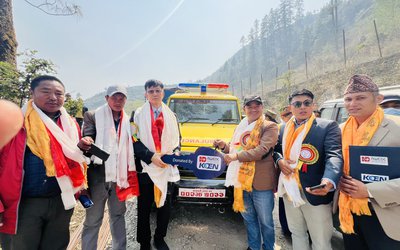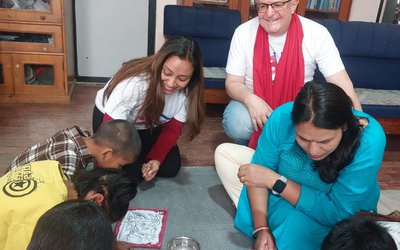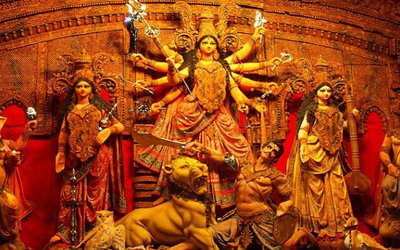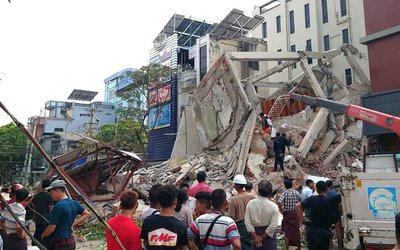
As fighter in France are fighting to control the fire to save Historic Notre Dame Cathedral, the National Reconstruction Authority (NRA) has started retrofitting the main building of Singha Durbar—Nepal's oldest palace,which was destroyed by a fire in 9 July 1973. A huge fire broke out in Singha Durbar engulfing all three wings of the palace. However, the front facing wing was saved with support from Chinese experts at the last minute .
However, the front row was badly damaged by the earthquake of 2015. After almost four years of delay, the authority has given the task of assessing the building’s structural condition and designing the retrofitting to a Nepali consulting company.
Built in 1908, the historic building housed several government agencies including the Office of the Prime Minister (PMO) and National Planning Commission until it the earthquake in 2015 severely damaged it.
Earlier, Digicon Engineering Consult Pvt Ltd, a consultant commissioned by the Ministry of Urban Development, to study eight historical buildings, had recommended reconstruction of Singha Durbar claiming just retrofitting would be inadequate.
Conservation experts, archaeologist and culture experts strongly questioned the Digicon report. They argued the consultant floated the recommendation without even bothering to test the bricks and soil.













History
It was built by Shumsher immediately after accession to the post of Prime Minister. It was initially a small private residence, but grew bigger during the construction. Immediately after construction Shumsher sold this property to the Government of Nepal for 20 million Nepali rupee as the official residence of Prime minister.
After his death in 1929, it was used as the official residence of prime ministers of Rana dynasty except Padma Shumsher JBR, who lived in his own Bishalnagar Durbar. The last Rana Prime minister to occupy Singha Durbar was Mohan Shumsher JBR. Even after the fall of Rana Dynasty in 1951, Mohan used this place, but in 1953 he was ordered by His Majesty's Government to leave the palace which became a National Property.
Exterior structure
The structure was designed by Kumar Narsingh Rana, Kishor Narsingh Rana. The architecture of the palace is a unique example of merging building traditions, including Palladian, Corinthian, Neoclassical mansions along with Baroque architecture.
Interior space
Before the fire of 1973, Singha Durbar had 7 courtyards and 1700 rooms with marbled floor, painted ceilings, silver furniture and expanses of crystal lighting.
State Hall
The State Hall is the largest and the most decorated room in this palace. This hall is adorned with foreign imported art pieces like Murano glass crystal chandeliers, Belgian mirrors along with English stained glass doors and Italian marble floors with floral patterns in walls and ceilings.
Gallery Baithak
Chandra Shumsher built a private theater and named it Gallery Baithak. It was used as a parliament building.
Under Government of Nepal
After the end of the hereditary Prime Minister system (Ranas), the government of Nepal used this palace compound to house government offices. The palace compound is occupied by both chambers of the Parliament of Nepal (the Pratinidhi Sabha, or House of Representatives, and the Rashtriya Sabha, or House of the States). It holds 20 ministries and government offices. Singh Darbar is also the headquarters of Radio Nepal and Nepal Television.
Fire Broke Out
On Monday, 9 July 1973, a huge fire broke out in Singha Durbar engulfing all three wings of the palace except the front facing wing . To prevent the front wing from catching fire, cannon destroyed three wings facing North, South and West. After the fire was put out, the whole area was rebuilt on the old foundation.
Earthquake of 2015
Singha Durbar was seriously damaged during the April 2015 Nepal earthquake. It was designated unsafe and was condemned.
Sources: Wikipedia and Newspapers
- Upper Trishuli-1 Hydropower Project Handed Over Ambulances
- Mar 31, 2025
- Embassy of Israel Celebrates Good Deeds Day with Children and Elderly at Tulasi Foundation
- Mar 31, 2025
- Tribhuvan International Airport to open for 18 hours daily from Tuesday ( April 1)
- Mar 31, 2025
- Eid-ul-Fitr live updates: PM Modi extends Eid greetings, wishes joy and success
- Mar 31, 2025
- Chaitra Navratri 2025: Importance Significant
- Mar 31, 2025















